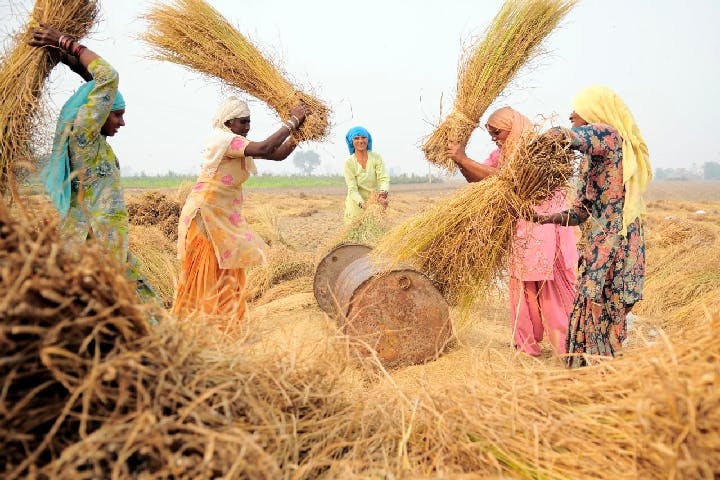The Neglected Victims of Climate Change
– Nicole Orttung
As rising temperatures uproot families, it remains difficult to point the finger at slow-moving transformations.
Floods, storms, and earthquakes make for compelling images — they’re immediate and violent spectacles, and as such, capture both headlines and the public imagination. Their power churns the international aid agenda, spurring government commitments and mobilizing private resources to assist the displaced.
It’s an unpleasant reality, but it’s easier to ignore other environmental phenomena that are just as catastrophic (if not more so) for people whose livelihoods are at risk from slow-moving disasters like climate change, years and decades in the making. Rising temperatures, changing rain patterns, and soil degradation upend the lives of families and entire communities in developing countries, but the amount of time required to produce unlivable situations muddies the causality between the environmental factor and the choice to leave home.
The causal relationship between flooding and homelessness is straightforward and easily justified. But farmers who lose their livelihoods due to climate change-induced heat stress are harder to categorize. Are they “environmental migrants,” driven from their homes by unprecedented environmental changes? Or are they “economic migrants” seeking to improve their quality of life?
While the decision to migrate is always intertwined with social, economic, cultural, and political factors, a closer look at migration patterns reveals the strong influence of climate change. A study of 7,000 Indonesian households over the course of 15 years found that earthquakes, volcanic eruptions, floods, and landslides have little to no impact on province-to-province migration rates; families are either able to weather these disasters or return home shortly after they occur, often with assistance from the state or charities.
On the other hand, researchers uncovered a strong correlation between heat stress and permanent migration. In Pakistan, a study recently found that flooding, while the focus of a substantial amount of international aid, does not have a statistically significant impact on migration, but temperature does: a rural Pakistani male is eleven times more likely to move out of his village if temperatures are extremely high.
Heat stress lowers the yield of wheat, corn, soybeans and other crops, with painful effects for farmers and everyone dependent on them. Starting at 25°C, any temperature increase intensifies emigration exponentially; a one degree jump to 26°C is associated with a 12–15 percent decline in the value of a household’s assets, and as temperatures rise higher, the losses are even greater. Scientists studying similar developments in Mexico took their research a step further, predicting that the declining crop yields caused by higher temperatures will spur the emigration of 5.5–6.7 million Mexicans by 2080. No longer able to make ends meet, families become desperate enough to leave.
While wealthy societies may find ways to adapt to climate change without migrating, others don’t have this luxury. The poorest families feel the financial strain most acutely, lack the resources to adapt, and have the least land and fewest assets to leave behind. Climbing temperatures exacerbate inequalities, as traditionally vulnerable groups, including indigenous populations, are uprooted. Communities with inadequate infrastructure and long-term public health challenges — malnutrition, poor health care facilities, and insufficient clean water — struggle to rise to such profound new challenges; the most vulnerable amongst them leave first and in the greatest proportions.
Though projections give a rough, imperfect picture of a complex phenomenon, the world they foretell merits action. As the Asian Development Bank stated in a recent report, “[Although] the full impact of these incremental processes will not be evident for several decades, the interventions needed are often very large in scale and will therefore need to be put into operation over time. The crucial point is that the need for action … is urgent.” For the families already packing their bags, this point goes without saying.
* * *
The Sources: V. Mueller, C. Gray, and K. Kosec, “Heat stress increases long-term human migration in rural Pakistan,” Nature Climate Change, 4, 2014, pp. 182–185.
Pratikshya Bohra-Mishra, Michael Oppenheimer, and Solomon M. Hsiang, “Nonlinear permanent migration response to climactic variations but minimal response to disasters,” Proceedings of the National Academy of Sciences, Vol. 111, No. 27, July 8, 2014, pp. 9780–9785.
Shuaizhang Feng, Alan B. Krueger, and Michael Oppenheimer. “Linkages among climate change, crop yields, and Mexico-US cross-border migration,” Proceedings of the National Academy of Sciences, Vol. 107, No. 32, August 10, 2010, pp. 14257–14262.
Photo courtesy of Flickr/Neil Palmer
